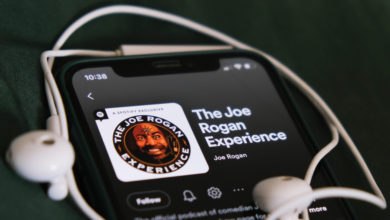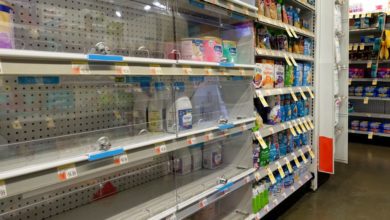Mexico’s Industrial Hub Suffers Water Cutoff Amid Drought

(MONTERREY, Mexico)—The industrial hub of Monterrey has long been one of Mexico’s most prosperous cities, so its almost 5 million residents were shocked when they lost the most basic of services: water.
A combination of an intense drought, poor planning and high water use has left residents of Mexico’s industrial powerhouse to resort to extreme measures that call up images of isolated, poorer areas: storing water in buckets to use a scoopful at a time.
“We are panicked, because we don’t know when the water will come back on,” said 60-year-old Monterrey resident María del Carmen Lara. “We finally got them to send us a water truck, but we still don’t have running water.”
As the water supply to the city had dried up, local authorities decided to reduce the flow of water. They currently hold only 45%, 2% and 8% of their capacity, and city authorities say the two lowest dams had only a few days’ worth of water left. They declared earlier this month that water will be only available between 4 and 10 a.m. They had previously extended the water service to 11am. But authorities haven’t even been able to supply that, and in thousands of homes, not a drop has come out of faucets for weeks.
Lara and her husband haven’t had running water for three weeks and don’t have enough money for holding tanks to store any significant quantity. In a stop-gap measure, some of the city’s suburbs have set up giant plastic water tanks in public squares for residents to fill containers with water. On a hot and sunny day they were carrying buckets, bins, and water tanks to the truck.
While big, costly, and often corrupt-laden water management plans are gone, the absence of long-term planning and conservation is still a problem. One project, that would have built an aqueduct to bring water from the Pánuco river, 310 miles (500 kilometers) away, to the city, which authorities at the time claimed would sure up the city’s water supplies for 50 years, was dropped in 2016 because of alleged corruption in the granting of contracts by the previous administration.
Experts say it was clear to see the crisis coming: for six years, Monterrey, capital of Nuevo León state, has suffered below-average rainfall or outright drought.
Set on an arid plain against the backdrop of the Sierra Madre Oriental mountain range, water — except for during brief, catastrophic floods — has never been abundant in Monterrey. For decades, the state’s water planning essentially came down to waiting for a hurricane in the Gulf to swell local rivers.
Juan Ignacio Barragán, the city’s water director, said Monterrey has been hit by a double whammy of drought and higher temperatures, which has dried up the city’s reserves. In May this year, Monterrey experienced its hottest average temperature. It reached 104 degrees (40 C)
“This is a situation which has forced us to ration water, to be able to distribute it more equitably throughout the city,” Barragán said. He accused the previous administration, which governed the state from 2015 to 2021, of allowing water extraction from dams in high levels without considering the impacts that the prolonged drought had already caused to the state’s water sources.
A city that used to drink 4,225 gallon (16,500 L) per minute, now only has 3,435 gallon (13,000 L) per second.
Barragán said the city has begun an effort urging city residents to use less. Historically, average daily consumption in Monterrey has been around 160 to 170 liters (42 to 44 gallons) per day per person, far higher than the World Health Organization’s recommendation of around 100 liters (26 gallons) per day.
About 60% of the Monterrey’s water comes from dams, with the rest coming from public wells. Private wells are also available in the state. Ranchers, businesses, and owners drill them with limits to how much water they can pump. However, these limits are often ignored and wells could have been dug secretly, as federal and state officials have confirmed.
And it’s not just Monterrey. The North American Drought Monitor is a collaborative effort of drought experts from Mexico, Canada and the United States. 56% of Mexico’s population are currently experiencing some degree of drought.
All of Nuevo León is either “abnormally dry” or in drought. The natural weather phenomenon La Niña and climate change may be factors in unseasonably low rainfall, according to officials and experts.
“For those who don’t believe in climate change, here are the consequences,” said Nuevo León Gov. Samuel García. “This is clearly the result of climate change: a semi-desert area gets drier.”
Brenda Sánchez, a former official of the federal ministry of Environment and Natural Resources who now serves as a local legislator in Nuevo León agreed, saying that urgent action was needed to combat the “real-life consequences” of climate change.
For now, the authorities’ response to water shortages has been more of the same: dig more wells, reservoirs and dams. A fourth dam is currently under construction in the state’s southeast and an aqueduct to carry water from the El Cuchillo dam, the state’s largest, is planned. The authorities are working to prevent illegal water grabs by rivers that feed dams. They have also tried to persuade large corporate water users, to allow them to share their water rights with the residents of cities.
Rosario Álvarez, an activist with the environmental group Pronatura Noreste, said the government’s plans are too little, too late.
“The most recent problem is that we haven’t planned for a drought like the current one,” Alvarez said. “We have had several years with below-average rainfall, we haven’t had hurricanes.”
“What came together was a lack of significant infrastructure, a lack of understanding of the characteristics of the region where we live and poor administration of what little water we have,” she said.
Meanwhile, until the next hurricane streams up the Gulf of Mexico — and there are none in sight — anger is growing among residents and street protest have broken out in Monterrey.
“We are fed up,” said 35-year-old Mónica Almaguer, a resident of the suburb of San Nicolas. “They haven’t even lived up to the schedule in which they said there would be water. I have gone 35 days without water.”
Gabriel Revillas, 47 years old, was also without water for several day and so he filled up a water jug from a private water purifier.
“The only thing we can do is pray, pray for a miracle,” he said.
—Associated Press reporter Suman Naishadham contributed to this report from Washington, D.C.
Read More From Time




